Can the smaller and lighter Insta360 X4 Air match the flagship Insta360 X5's quality? I compared the two 360 cameras to find out
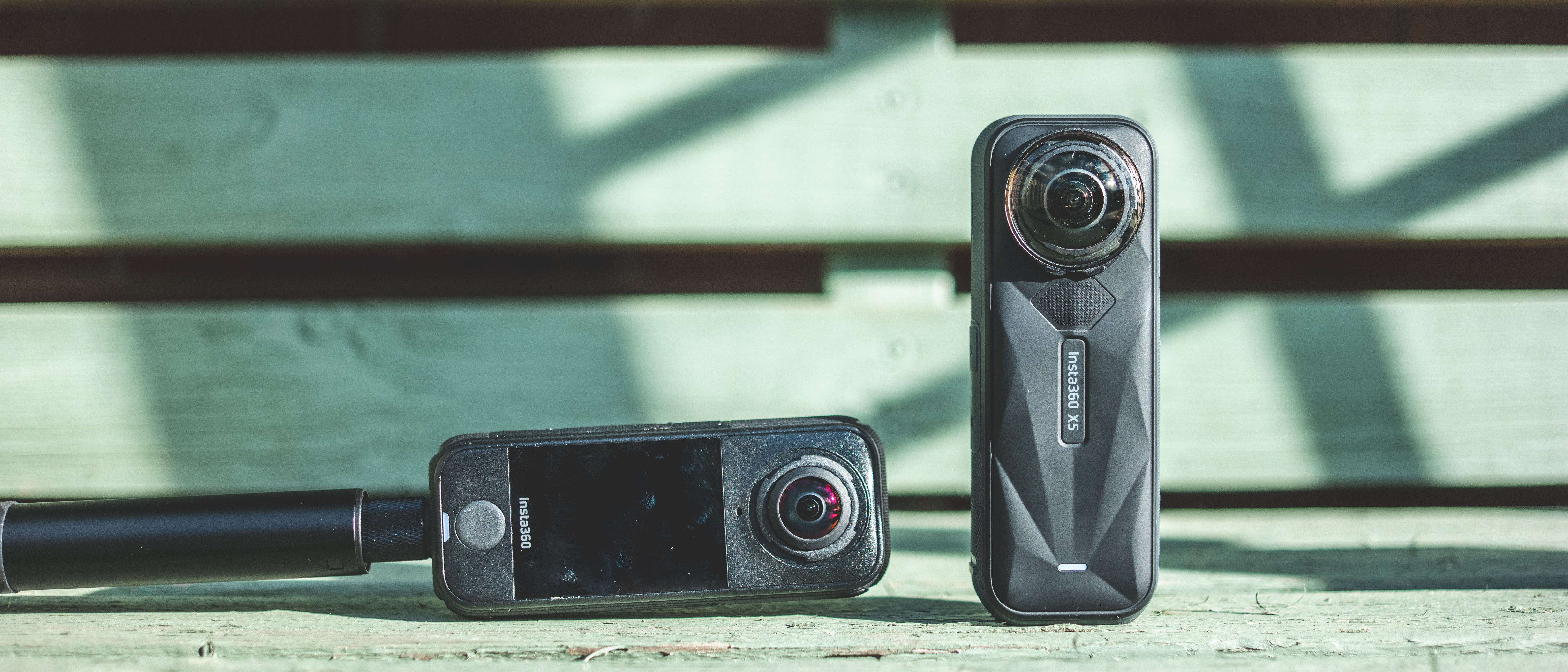
The current reigning king of 360 action cameras, the Insta360 X5 features a larger sensor than its smaller relative, the X4 Air
Pros
- Affordable price for premium performance
- Works with DJI microphones
- Built-in storage
Cons
- Non-replaceable lenses
- Not suitable for underwater video off the bat
A rugged and reliable 360 camera that makes the process of making great 360 videos extremely simple, and for a bargain price
Pros
- Larger image sensors improve video quality
- Improved sound capture
- Easily replaceable lenses
Cons
- Battery life can drain fast
- X4 owners might struggle to find enough changes for an upgrade
If you’re looking to buy a 360-degree action camera, there has never been a better time to take the plunge. There are more options than ever before, catering to every budget. Insta360 has quickly risen to become a household name in this market, and we’ve consistently rated the company’s products among the best 360 cameras available.
The Insta360 X5 is currently top of the list, and in our rave review, we commented on the exceptional image quality the camera can deliver from its large sensor. Meanwhile, in my in-depth review of the brand new Insta360 X4 Air, I was swept away by the blend of price, portability, and professional features.
When two similar cameras are released only a few months apart, it always raises the question of how different they can be and what truly sets them apart in terms of performance. On paper, there isn’t too much to separate the X5 and the X4 Air, other than the headline differences. Having spent the last decade reviewing cameras for my job, I’ve come to realize that this usually means the biggest divergence between two models is in their target audience rather than the absolute specs.
In other words, they aren’t meant to directly compete against each other – no sensible manufacturer would cannibalize their product range intentionally – and instead they aim to complement each other, providing a tailored experience for specific user requirements.
That’s why I was so looking forward to taking these Insta360 siblings together for a spin, to find out exactly who each camera is aimed at, if there is enough of a difference between them under the skin, and which one gives you the greatest value.
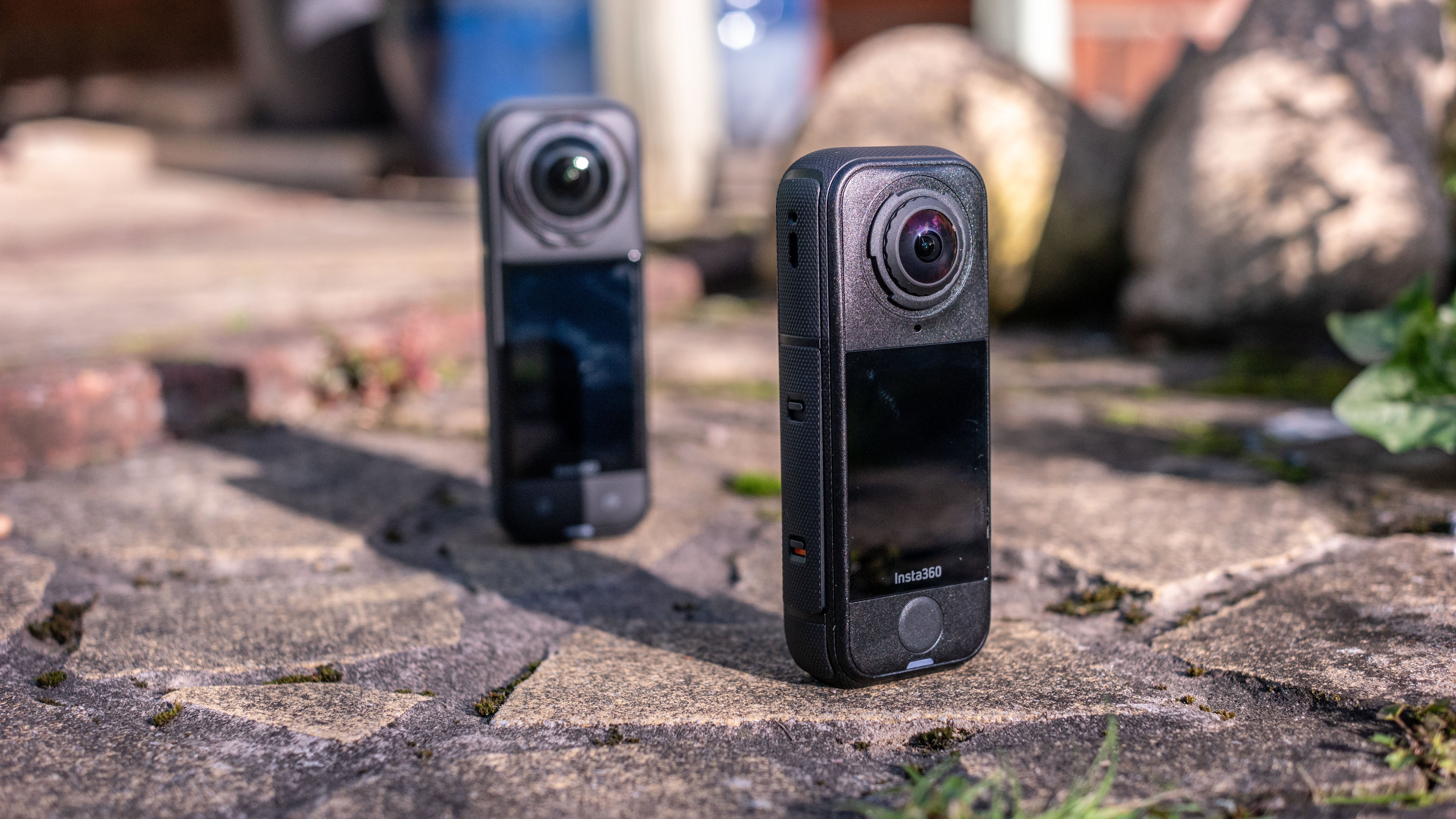
1. Insta360 X5 vs Insta360 X4 Air: Build quality and ruggedness
- Both cameras are waterproof to 49ft (15m)
- Insta360 X4 Air weighs 5.8oz / 165g, Insta360 X5 weighs 7oz / 200g
- The X5 is 10.7mm taller than the X4 Air (124.5mm vs 113.8mm)
Despite being around $150 / £190 less expensive than the X5, the ruggedness and design of the X4 Air hold up well under scrutiny. Both cameras are superbly well-constructed, showing no real give in the body material under pressure. When tapped with a finger, the shells give back a dull thud rather than a hollow rattle, which really lends the impression of solidity. That’s more than I can say for many recent mirrorless cameras that you’d pay considerably more to own.
I never thought I’d see the day when I compared an action camera to a Leica rangefinder, but hear me out on this before you scoff into your coffee, as I’m going somewhere with it. While they clearly don’t have the metal feel of, say, a Leica M EV1, with regards to the handling, the X5 and X4 Air give a similar sensation of being crafted from a single piece of material. There are few perceptible joins and seams beyond the accessible battery and USB compartments, and the waterproof rubberized bodies instill serious confidence that your camera would outlast you in a tumble from your mountain bike or skis.
Sign up for breaking news, reviews, opinion, top tech deals, and more.
I know the X4 Air is lighter on paper, but I must admit I didn’t notice the difference much out in the field. I had expected there to be more of a size difference too, somewhere between the tiny Insta360 Go Ultra and the X5. I’m not saying being more portable is not welcome, merely that it feels less like a little brother and more like a younger cousin to the X5.
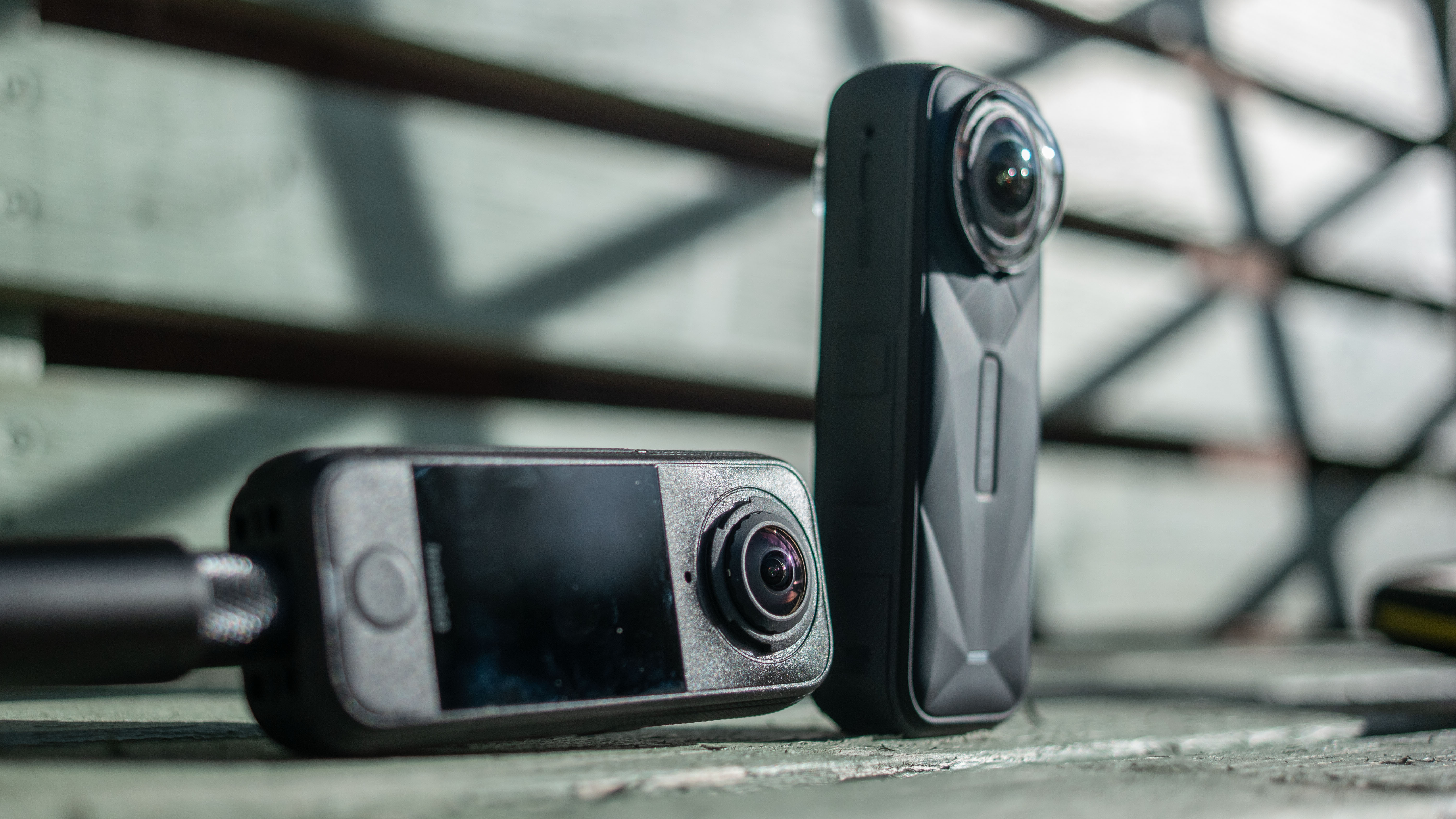
The biggest indicator that both cameras are from the most recent generation is their mutual compatibility with Insta360’s lens replacement system. It’s hard to quantify how reassuring it is to know that you can swap out a damaged lens on-the-go, whereas on previous cameras, a misjudged or poorly timed movement could have ended a shoot before it began. I don’t want to tempt fate, but I have yet to need a new lens, however an inspection of the kit confirms it’s relatively easy to use, at least with some practice.
Impressively, both the X5 and X4 Air are rated as waterproof to 49ft / 15m, a significant upgrade to the original X4 body which was limited to a 10m dive. Although I didn’t get the chance to go diving while I had the cameras, both got significantly wet during a rainstorm while I was out shooting.
I deliberately left them out of my camera bag, after double checking that all of the latches were properly sealed – there's an orange indicator on the various port doors and battery, which disappears when the latches are sealed. As expected, neither camera was upset by the inclement weather and a rub-down with a lens cloth was all that was needed to dry them off.
- Ruggedness winner: draw
2. Insta360 X5 vs Insta360 X4 Air: Performance and usability
- Smaller X4 Air battery limits recording to 88 minutes in 8K, the X5's can run up to 208 minutes for 5.7K
- Both listed 2.5-inch screens, but the X5's is bigger
Other than the overall sensor size, it’s battery life where the biggest compromises of the smaller body of the X4 Air are most noticeable. With a smaller design comes a smaller battery pack, and the example found on the X4 Air has a capacity of 2,010mAh, compared to the X5’s larger 2,400mAh unit. This drastically reduces the operating duration of the X4 Air, limiting it to 88-minutes of 8K recording at 30fps, or 100 minutes at 6K24p.
The 208-minute runtime of the X5, set to 5.7K24p in Endurance Mode, is far more workable for an average day of shooting, and that’s not taking things like air temperature into account – in hot or extremely cold locations, the maximum runtime could be reduced further. While I’d always advise carrying a backup battery when shooting away from home, I found it an absolute requirement when out with the X4 Air. Both cameras charged quickly using a USB-C cable though, assuming you have access to power while out shooting.
Both cameras benefit from being paired with a host smartphone and controlled via the Insta360 app. Not only does a phone screen provide a much better preview image, the larger area also makes it easier to access the various setting controls. There isn’t much to separate the on-camera main LCDs, though if I had to choose, I think the X5’s is sharper to my eye and less mushy. The auto brightness control behaved a little more predictably than the X4 Air, keeping the preview true-to-life more effectively, although I admit I’m being picky here.
If there’s one thing about a camera that will make a good first impression on me out of the box, it’s an efficient menu system. Happily, both Insta360 cameras have a simple and sensible user interface. Features are all grouped together as they should be; a swipe up reveals resolution and frame rate control for movies, a right-left swipe gives access to camera settings, swiping down brings down system settings like screen brightness and gesture control (just like many phones), and playback is found by swiping left-to-right.
This layout is shared between the cameras and is pleasingly functional. Given the larger LCD size of the X5, I did enjoy working on this camera more than on the X4 Air, which I kept paired to app almost all of the time.
- Performance and usability winner: Insta360 X5
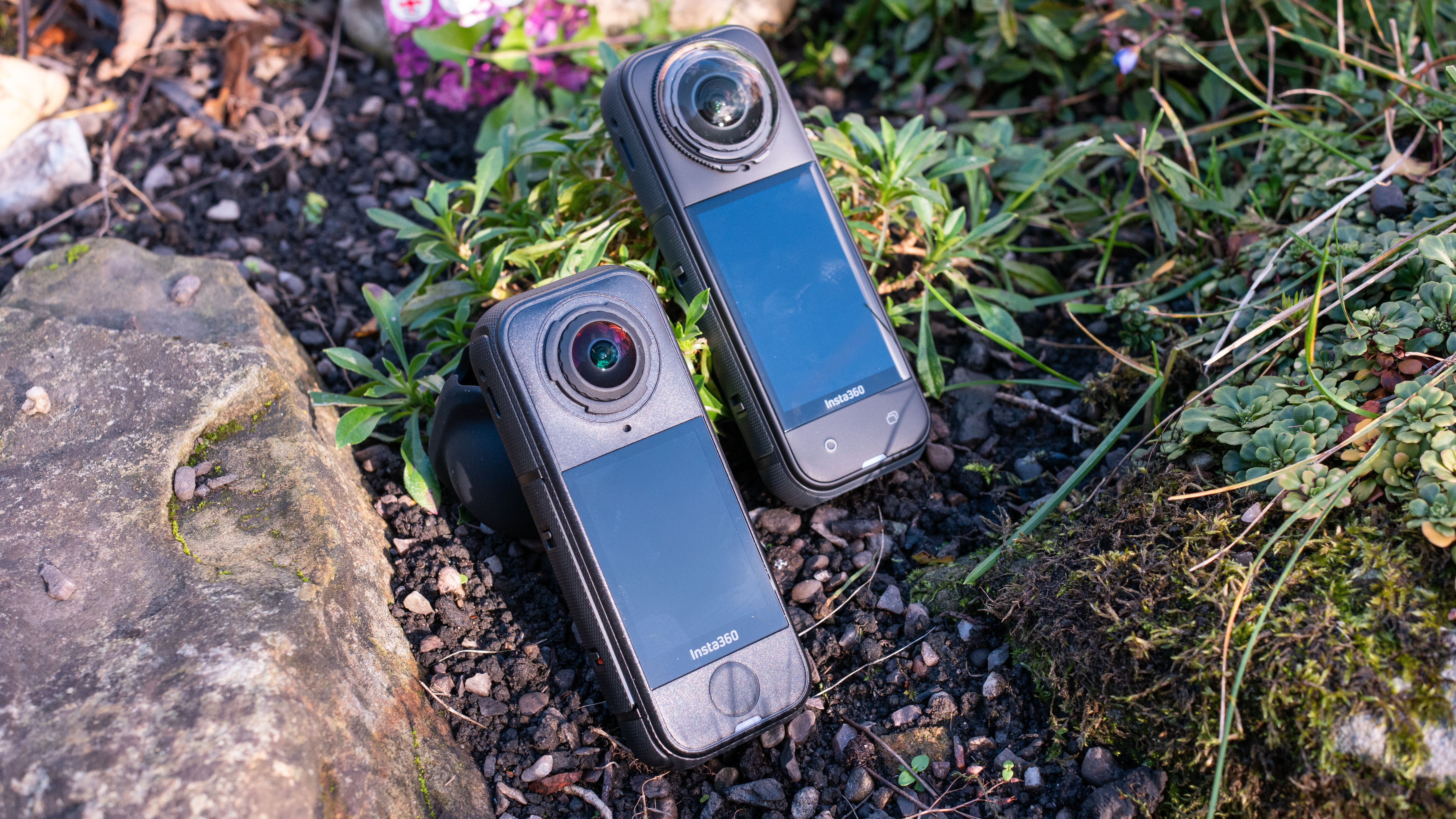
3. Insta360 X5 vs Insta360 X4 Air: Image quality
- The Insta360 X5 features an I-log mode
- The Insta360 X4 Air relies on a flat color profile with no log option
- The X5 uses a larger 1/1.28-inch sensor type, the X4 Air features two 1/1.8-inch sensors
The X5 uses larger 1/1.28-inch type sensors, so going into this comparison, I was already expecting a big quality difference between the cameras. It was no surprise that the greatest differences can be seen in low-light footage, where the X5 produces clips that are visibly cleaner and with more definition of finer detail. Colors look more natural and retain a certain ‘pop’ that is missing from X4 Air video at the highest sensitivities.
The X4 Air lacks the dedicated PureVideo Mode of the X5, which Insta360 describes as using “Advanced AI Noise Reduction”. Exactly what’s going on behind the scenes, I’m not certain, but video is noticeably brighter from the X5 without astronomical levels of image noise. That being said, the X4 Air still performed admirably under poor indoor lighting and during the fading light of a landscape at sunset, but with more blocked-up shadow detail.
The dynamic range of both cameras was impressive; their respective combinations of sensor and processor power punch above their weight in high-contrast light. The HDR modes on both models worked well, producing usable clips out-of-camera, although once again, the X4 Air couldn’t quite keep up in the harshest contrast. This is where I missed the I-Log support the most. Being able to have full grading control of footage from the X5 was helpful, and the X4 Air’s Flat Profile didn’t natively capture as much data in highlight areas.
The Auto White Balance systems of both models behaved almost identically, and in a positive way. They weren’t easily confused by brightly colored objects in-frame, and produced natural skin tones. I had to intervene during the sunset seen in the video above, switching to manual so that I could select a custom color temperature to retain the warm tone, but you’d encounter this on many cameras.
Overall, the X5 wins on for pro videography uses
- Image-quality winner: Insta360 X5
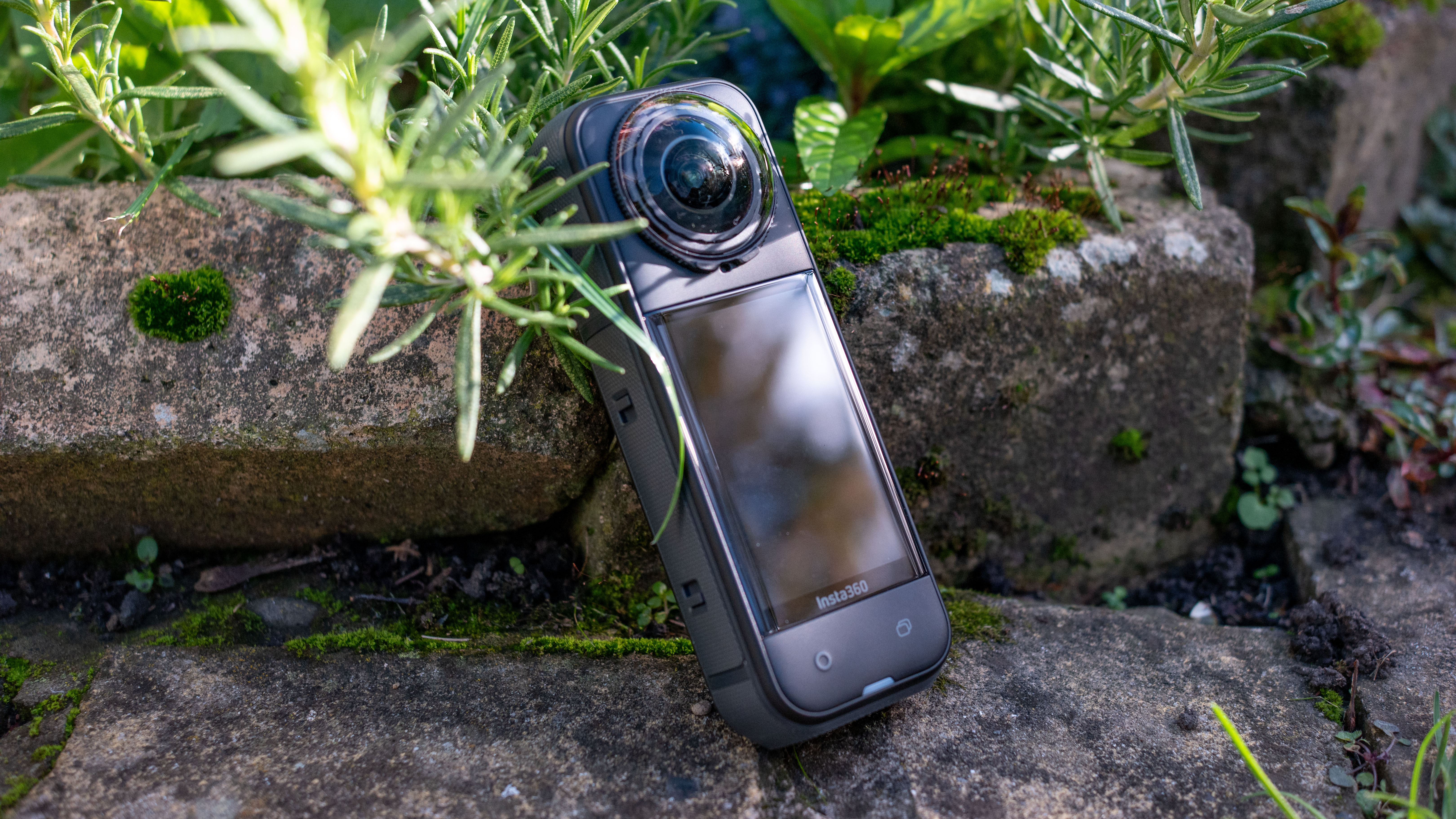


4. Insta360 X5 vs Insta360 X4 Air: Sound quality
- Auto Wind Reduction modes are present on both models
- Both cameras are compatible with the first-party Insta360 wireless mic
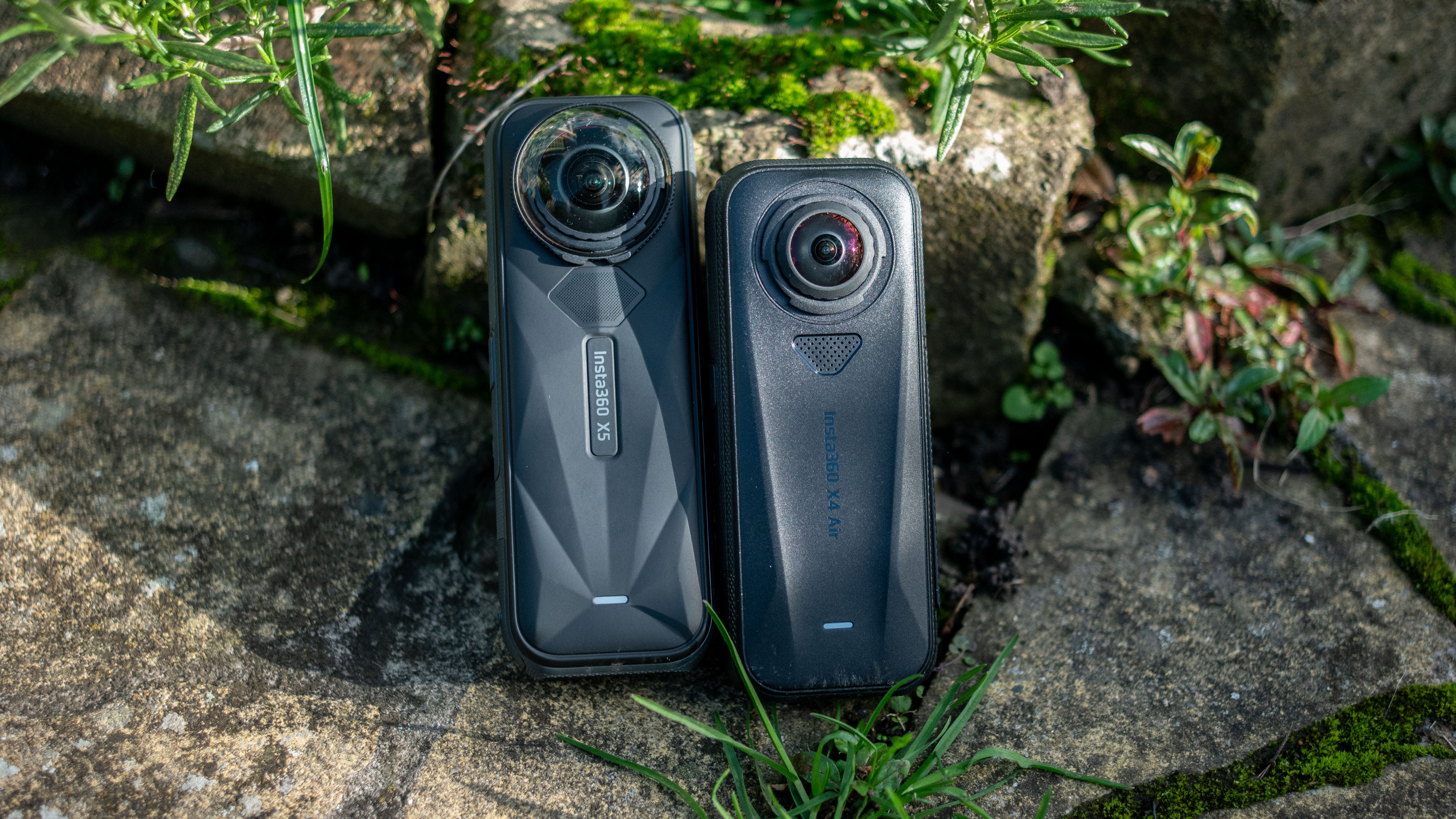
On the subject of audio, no action camera is going to be able to capture movie-theater quality sound straight in-camera. Still, both the X5 and X4 Air made good attempts, and I couldn’t detect much difference between the sound captured with their built-in mics. Both of them feature on-body wind protection which was about as effective as I could hope for in devices such as these. I’d recommend an external mic like the Insta360 Mic Air Insta360 kindly supplied me with for testing, which makes a significant improvement to audio quality
- Sound-quality winner: Draw
Insta360 X5 vs Insta360 X4 Air: Early verdict
Unlike comparisons between cameras from different brands, I knew this one was going to be a tough call. The Insta360 X5 and X4 Air were brought to market within months of each other, so a lot of the general design elements are shared. I’ll start with the obvious differences...
The X5 noticeably outperformed on image quality. Noise characteristics in fading light, color reproduction, and dynamic range all benefited from the PureVideo Mode that is missing on the X4 Air. Equally, high-end users will appreciate the Log mode support on the larger camera for advanced grading work. In 360 mode, the X5 also provides the option to shoot up to 60fps, while the X4 Air is limited to 50fps.
Footage from the X4 Air was by no means bad, however, and it managed to impress me in some fairly tricky lighting conditions. Yes, there is more noise visible and fine detail does suffer from in-camera noise reduction, but for many users the results will be more than acceptable. Considering the price difference, you’d expect the X5 to lead on professional features and performance in the most extreme conditions.

Portability is an interesting proposition in this case. The X4 Air is smaller and more lightweight than the X5, but it’s marginal, at least in practise. Neither camera is going to weigh you down much, and I’m not sure this metric is one I’d use to choose between them. Given the price difference, I feel it’s more specifications than physical dimensions that the X4 Air goes light on. It’s more of an entry-level camera than a smaller version of the X4 or X5, and if you look at it as such, it’s actually far more impressive.
The X4 Air gives you a lot of features for the money, and it represents a fantastic entry point to the Insta360 ecosystem. The X5, meanwhile, is the best choice for outright image quality and professional features. If I had to pick one, I’d save up for the higher-end X5 to use as my main 360 camera, but if you buy the X4 Air as your first foray into this medium, it will do everything you want it to.
Follow TechRadar on Google News and add us as a preferred source to get our expert news, reviews, and opinion in your feeds. Make sure to click the Follow button!
And of course you can also follow TechRadar on TikTok for news, reviews, unboxings in video form, and get regular updates from us on WhatsApp too.
You might also like

Peter is a photographer, writer, and journalist who served as Editor for Digital Photographer Magazine, working on the title for 8 years.
You must confirm your public display name before commenting
Please logout and then login again, you will then be prompted to enter your display name.